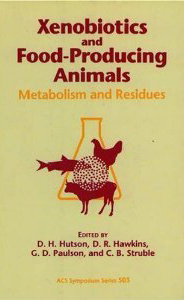
Written by: Heather Clemenceau
“…all horse meat producers must obtain the health and medical history – complete with information on all drugs and vaccines used – of each horse for the 180 day period before consumption.”
– standard form letter response from Conservative MPs – 2016.
Whenever I read documents obtained through an Access-To-Information request, I think the bar for this industry cannot go lower. The ATI documents included here covered all Equine Lot Inspection Audits for the years 2015-2017 year-to-date, and captured conversations between CFIA veterinarians and feedlot/auction staff. These Lot Inspections are audits that are carried out approximately once a year, although it appears that our favourite Farmville operators, Bouvry Exports’/Prime lot is being audited more frequently. When you read the audit reports, you’ll understand why – the CFIA appears to be doing a fair bit of manual checking of their record-keeping.
It should really come as no surprise that feedlots and auctions have a perpetual struggle with the paperwork required to track horses from receipt to slaughter. Kill buyers are bottom level feeders who travel from auction to auction picking up horses. They have no idea where these horses come from, nor do they care. Auctions and feedlots typically will complete just enough paperwork so that can scrape by, and they’re going to fill it out in the way that it needs to be filled out so that it meets the CFIA criteria. Sometimes though, they can’t even meet the minimum standard and even the CFIA has to write them up when uncomplicated record management tasks are turned into Sisyphean clusterfucks.
So what is the Lot Program and how does it work?
The lot program is used by high volume accumulators of horses for the purpose of slaughter. It’s really a sort of “express lane” in that these producers use a group declaration (the Lot-EID or LEID) in lieu of individual EIDs. The program requires at least a 180 day recorded history prior to slaughter. Lot inspections review the procedures maintained in Lot Programs for equine feedlots – this covers the control of EIDs (Equine Information Documents), vaccines, medications, movement of horses in and out of each lot and a few other criteria. Please note that the lot program does not verify the health of any equines or the condition of the feedlot itself. The CFIA describes the process in more detail if you need it.
If you’re new to the horse slaughter issue, here’s a bit of history on the EID – its implementation was announced by then-Director of the Meat Programs Division of the CFIA, Dr. Richard Arsenault, in a response letter to the European Commission on October 23, 2009. Arsenault announced that, in order to meet EC requirements for exporting horsemeat, every equine presented for slaughter as of July 31, 2010 would be accompanied by an Equine Information Document.
Fast forward to 2014 when the European Commission’s Food and veterinary Office released an audit in 2014 that raised concerns about the tracking process. In 2011 the same issues were raised, so you could say there’s little evidence of improvement. You can read the final report, the response, and the CFIA proposed changes.
The audits reveal that, shockingly, Bouvry Exports/Prime Feedlot holds anywhere from 7,000 – 10,000 horses at any given time. According to the audit reports, a total of 52 lots of horses are sent to their deaths each year (1 lot per week). Additionally, horses who receive any medication while on the lot are subjected to painful branding and re-branding as part of the record-keeping process.
Forms Are So Hard And Confusing!
The February 2016 audit of Bouvry’s Prime Feedlot (where the report indicated 10,000+ horses were on-hand) contained some findings flagged as “unacceptable” by the Veterinarian-in-Charge:
Finding #6 and #7 (see pages 31 and 35): – “…drug list was changed in August but not updated. CFIA wasn’t informed. Instead of Derapen (penicillin G Procain) which is no longer available, Biomycin is used since August 2015. Biomycin is not authorized to be used yet.“ At the time of writing, Biomycin is not even listed on the Meat Hygiene manual for equines. The manufacturer of Biomycin states that is has a withdrawal time of 28 days (for cattle).
Finding #20 (see page 32 and 36): – “One of the records reviewed was not transferred from daily vaccine application records (lot records) to a Lot Equine Information Document. Fluvac vaccine application was missing. All other records verified during the audit were accurately transcribed.”
Finding #25 (see page 33 and 36): – “No EIDS on file, none reviewed. [Redacted] said the horse [kill] buyers did not supply any of EIDS [SIC] along with horses purchased. This issue was discussed at the previous audit and Prime Equine Lot.”
So there were no EIDs on file for an entire lot of horses? What happened to slaughter-bound horses without them? There is no mention of what became of them, or whether anyone attempted to locate the missing paperwork, although I presume the horses were slaughtered anyway, no matter how laughably incomplete or non-compliant the paperwork was.
“It is the responsibility of the Lot Program management to request EIDS and verify for non-permitted drugs.”
Supplemental Export Reports for a May 2016 visit that summarizes communications with regards to an Operational Guidance protocol distributed in February 2016. (page 45-47)
Perlich Bros. Auction gets called out for not collecting EIDs:
“[Redacted] contacted [redacted] of Perlich auction market over the phone in April 2016 (specific date unknown). The purpose of the call was explained, and [redacted] was asked about the creation of EIDs at his auction market. [Redacted’s] response was that, while [redacted] staff were happy to handle any EIDS that are submitted with equines for sale, no effort is made to ensure that horses enter auction with complete EIDS, that is is [SIC] “not their job,” and that the responsibility for obtaining valid EIDS lies with the buying agent. Very few are thus processed at [redacted] auction.” At this late stage (7 years after the implementation of the EID), how is it that the incomprehensibly stubborn auction staff can give the standard disclaimer, “that’s not my department?”
CFIA resorts to googling kill buyers/plant management for follow-up information:
“On 12 April [redacted] received a list of buying agents for the Bouvry plant from [redacted] who was, at the time, a CFIA meat hygiene inspector at the plant. When contact information was requested for these individuals, so that upcoming verifications could be discussed, it was requested that an explanation/reasoning for the request be sent directly to plant management. This was done by [redacted] on 13 April. Having not received a response by early the next week, a Google search was conducted to find a contact number for [redacted] spoke to [redacted] over the phone on 18 or 19 April. The potential for CFIA presence at upcoming horse auctions was discussed, as was the method with which he goes about obtaining EIDS for slaughter horses. [Redacted] reply was that [redacted] no longer buys horses for this purpose (slaughter) at Perlich auction because of the difficulty of obtaining EIDs. [Redacted] rather focuses on the Innisfail Auction Market (IAM) where all horses enter auction with EID unless explicitly declared by the owner that the animal is not for meat sale. There [redacted] is able to enter the ring and verify that the EID is acceptable before bidding on the horse.”
So who is “redacted” in this scenario? Clearly there is more than one person whose name has been concealed. Either this person is a kill buyer(s) or plant management, in which case, if they didn’t respond to the CFIA enquiry, that’s pretty inexcusable.
“[Redacted] encouraged the CFIA to audit [redacted] activities at the IAM.”
CFIA to Bouvry – EIDs must accompany all horses to the feedlot:
“It was felt that in order to conduct the verification task correctly, the district needed to be clear on whether or not it was permissible for horses bought in Canada to enter the feedlot system without an EID…” “The response was that unless there was some other auditable means (on file) of ensuring a history of no non-permitted substances in the horse(s) no horse without a valid EID is allowed to enter the feedlot, despite a six-month waiting period.”
The CFIA’s attempt to enforce what must seem like an unfathomable bureaucracy apparently perturbed staff at Bouvry’s, who sent an inquiry to the CFIA asking why [redacted] was “asking so many questions.” Due to the difficulties with paperwork at the Perlich auction, the CFIA discussed attending their auction on overtime and it was decided that this was not a valuable use of CFIA resources. Recommendations were passed to the Red Deer CFIA office for a vet inspector presence at Innisfail.
The confusion that continues to this day over the EID and other paperwork is evidence that inputs into the food chain are not something to be taken casually, yet that is exactly what is happening. The doubts highlighted in these reports leave another cloud over the already sordid industry – something policymakers need to pay attention to.
Despite this, Dr. Richard Arsenault, former director of the meat programs division for the Canadian Food Inspection Agency (CFIA), thinks that the regulations are working. “It’s extremely well respected in terms of compliance” – a statement that he has continually championed throughout the years. This is basically the same feeble confirmation that is echoed by anyone in charge of any aspect of the meat program at the CFIA. Downstream, MPs may take months before they reply to our complaints about horse slaughter, and if they do it’s usually nothing more than the standard form letter that doesn’t even address the concerns raised by the constituent. Instead, the response parrots the same impotent reassurances put out by the CFIA.
The horse slaughter pipeline is one of the most unregulated livestock venues in North America. There is absolutely no desire or motivation on the US side to enforce EID authenticity because Americans do not eat horsemeat. There is no resolve on the Canadian side because they are importing horses for the purpose of (primarily) exporting the meat. Regulating this paperwork would cost everyone money, and no one wants to do that.
You may also download these documents here.
 Written by: Heather Clemenceau
Written by: Heather Clemenceau






























